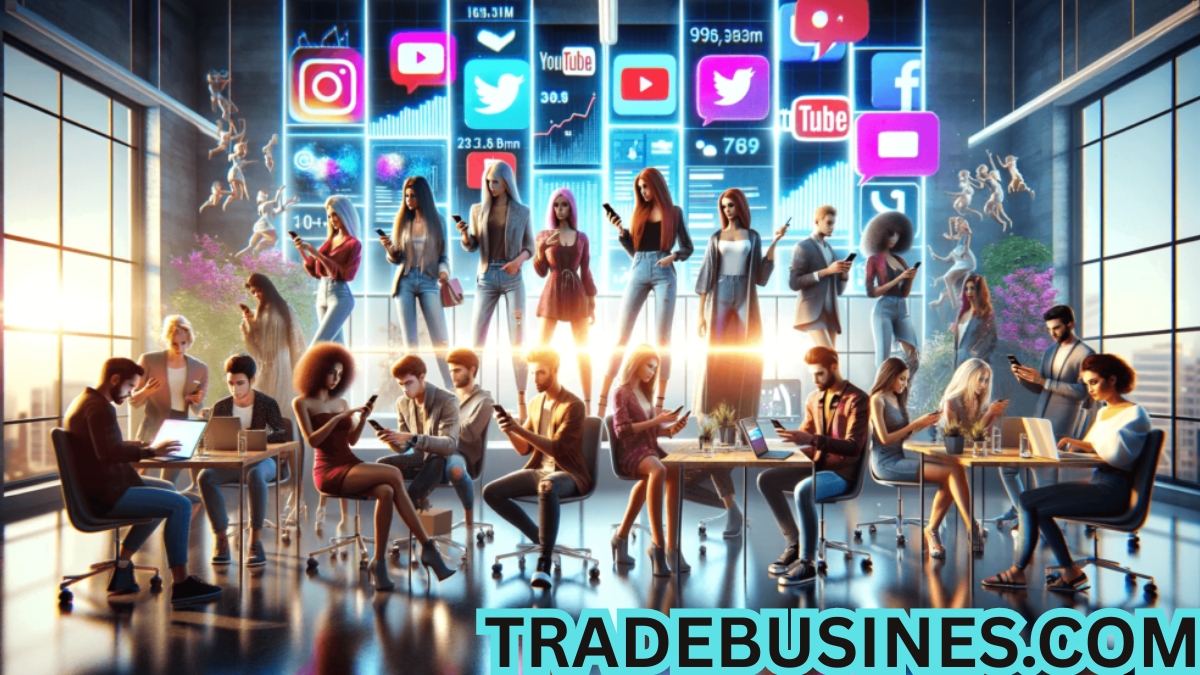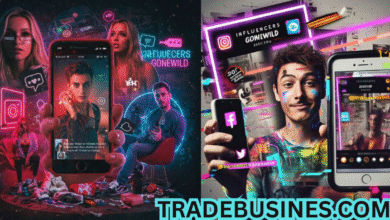Introduction to InfluencersGoneSild
The term “InfluencersGoneSild” has recently emerged in online spaces, blending curiosity with controversy. While the term itself appears to be a stylized or possibly misspelled phrase—possibly hinting at “Influencers Gone Wild” or “Influencers Gone Solid”—its usage across social media and internet forums has grown rapidly. The concept centers around internet influencers who have drastically shifted their behavior, reputation, or content style in a way that garners massive attention. This phenomenon is often characterized by a break from their usual image, unexpected online actions, or viral controversy.
Whether used humorously or critically, the term represents a broader cultural discussion about influencer accountability, fame, and the sometimes volatile nature of internet stardom. As influencers play a larger role in shaping trends, consumer behavior, and social ideologies, it becomes crucial to examine the complexities behind a phrase like InfluencersGoneSild.
Origins and Interpretation of the Term
InfluencersGoneSild doesn’t have a singular, universally agreed-upon definition, which is part of what makes it so intriguing. The phrase seems to have originated as internet slang, possibly a deliberate misspelling to avoid content moderation algorithms or a result of phonetic spelling by users. It has since evolved into a hashtag, meme category, and label for describing moments when influencers act unpredictably or go against their previously curated image.
In some cases, the term refers to influencers who have broken free from the constraints of branding and sponsorship deals, choosing instead to speak more openly and authentically. In other cases, it refers to influencers engaging in controversial or unfiltered behavior that leads to backlash, deplatforming, or public outrage. Therefore, InfluencersGoneSild can be interpreted as either a celebration of authenticity or a warning about the dangers of fame without responsibility.
The Psychology Behind Influencer Behavior Changes
To understand why influencers may “go sild,” one must consider the immense pressure they face. Influencers often live under constant surveillance by their followers, sponsors, and critics. The need to maintain a perfect image, meet brand expectations, and continuously produce engaging content can lead to emotional burnout, identity crises, or even rebellion against the system that elevated them.
When influencers reach a point where they can no longer maintain the constructed persona, some begin to express their raw, unfiltered selves. This may manifest as erratic behavior, political rants, controversial opinions, or public meltdowns—actions that shock their audience and go viral under labels like InfluencersGoneSild. Others might rebrand themselves completely, shifting from entertainment to activism or from lifestyle content to personal confessionals.
In both scenarios, the root cause often lies in psychological strain, a desire for authenticity, or a strategic move to regain attention in an oversaturated digital market.
Cultural and Social Implications
InfluencersGoneSild is not just an internet curiosity—it reflects deep cultural themes about modern identity, media consumption, and public accountability. The phenomenon raises questions about how much influence should be allowed to individuals who may not be trained or equipped to handle such power. It also challenges the perception that influencers are immune to criticism or change.
From a societal standpoint, these moments can spark important dialogues. For example, when an influencer speaks out about mental health, addiction, or abuse after “going sild,” it may open up space for public discourse. On the other hand, when the term is applied to influencers spreading misinformation or engaging in dangerous behavior, it highlights the urgent need for digital literacy and ethical standards in influencer culture.
The duality of the term—both amusing and concerning—mirrors society’s complicated relationship with fame. People are both fascinated by and wary of those who rise to prominence online, especially when their behavior strays from the norm.
Impact on Followers and Online Communities
The effects of InfluencersGoneSild moments extend beyond the influencers themselves. For followers, these events can be confusing, entertaining, or even traumatic depending on the severity of the influencer’s actions. Young audiences, in particular, may struggle to process the sudden shift in behavior from someone they once admired or idolized.
Online communities often become battlegrounds during these moments. Fans may defend their favorite personalities vehemently, while critics call for cancellation or accountability. The internet’s polarized nature tends to exaggerate reactions, leading to heated debates, viral tweets, and reaction videos. In the end, the influencer’s brand may be permanently altered—either redefined or destroyed.
For content creators, these incidents serve as cautionary tales. The potential for rapid backlash reinforces the importance of transparency, authenticity, and careful brand management. It also reveals how a single moment can redefine years of reputation-building.
Commercial Consequences and Sponsorship Fallout
A major aspect of the InfluencersGoneSild phenomenon is the commercial impact. Brands invest heavily in influencers because of their perceived reliability, relatability, and engagement metrics. When an influencer acts unpredictably, sponsors may distance themselves to protect their reputation.
The fallout can be swift. Endorsement deals may be terminated, collaborations canceled, and platforms demonetized. In some cases, influencers are dropped entirely from brand rosters, losing significant income and access. This commercial backlash often serves as a wake-up call for other influencers, reinforcing the need for strategic image control and professionalism.
However, not all influencers suffer from this fallout. Some use the attention to pivot toward independent monetization—creating exclusive content for platforms like Patreon or OnlyFans, or selling their own merchandise. In these cases, going “sild” can ironically boost their independence and profitability, especially if their new persona resonates with a specific niche audience.
The Role of Media and Public Perception
Media coverage plays a vital role in amplifying the InfluencersGoneSild narrative. Once an influencer deviates from the norm, entertainment outlets, gossip blogs, and YouTube commentators are quick to highlight the incident. This media attention fuels public interest, driving traffic, views, and ad revenue for both the influencer and the reporters.
But media portrayal can also shape perception unfairly. Sensationalized headlines and out-of-context clips may distort the reality of what happened. This can lead to misinformation, unjustified backlash, or even harassment. In this way, the term InfluencersGoneSild sometimes becomes a tool for ridicule rather than understanding.
It is essential to approach such stories with critical thinking and empathy, especially when dealing with individuals navigating personal challenges or mental health struggles.
The Ethical Dilemma of Online Fame
InfluencersGoneSild forces us to confront the ethical dilemmas of internet fame. When someone becomes famous for their personality or lifestyle rather than a specific talent or craft, the boundaries between public and private blur. Influencers are expected to share everything yet maintain composure at all times—a paradox that can lead to emotional strain.
Moreover, the culture of instant fame enables rapid rises and falls. People are elevated to influencer status based on virality, not necessarily on ethical integrity or emotional resilience. When these individuals falter, audiences often respond with schadenfreude, watching their downfall as entertainment.
This raises important ethical questions: What responsibility do followers have when supporting influencers? How should platforms moderate behavior without infringing on freedom of expression? Should influencers receive training or guidance when navigating fame?
Addressing these concerns may help reduce the number of InfluencersGoneSild scenarios that end in real harm or irreversible consequences.
Looking Ahead: The Future of Influencer Culture
As the digital landscape evolves, the influencer industry is likely to become more regulated and mature. Already, we are seeing a shift toward professionalization, with influencer marketing agencies, contracts, and content guidelines becoming more common. Influencers are also becoming more aware of the long-term implications of their actions and taking steps to protect their mental health and personal brand.
Yet the allure of virality and the constant need for attention mean that InfluencersGoneSild moments will likely continue to surface. As long as the internet rewards shock value and emotional vulnerability, influencers will walk a fine line between authenticity and recklessness.
The key moving forward lies in balance. Audiences must learn to differentiate between genuine human struggles and manipulative attention-seeking. Influencers must build resilience and support systems to manage fame responsibly. Platforms must invest in fair moderation and clearer guidelines.
In the end, the phrase InfluencersGoneSild is more than a meme—it is a mirror reflecting our collective relationship with fame, identity, and accountability in the digital age.
Frequently Asked Questions (FAQs)
What does “InfluencersGoneSild” mean?
The term refers to influencers who drastically change their behavior, image, or content in ways that surprise or disturb their audience. It can imply unpredictability, controversy, or a break from the influencer’s usual persona.
Is “InfluencersGoneSild” a real word?
No, it’s likely a stylized or intentionally misspelled term created for internet use. It may be a play on phrases like “Influencers Gone Wild” or “Influencers Gone Solid.”
Why do influencers “go sild”?
Influencers may act differently due to stress, burnout, personal changes, or strategic branding shifts. In some cases, their behavior is a cry for authenticity; in others, it results from pressure or controversy.
Can going “sild” help an influencer’s career?
Sometimes it does, especially if the behavior garners attention and creates a new niche audience. However, it can also damage credibility and result in lost sponsorships.
Are there any positive examples of InfluencersGoneSild?
Yes, some influencers use their platform shifts to speak more honestly about mental health, social issues, or personal growth, gaining respect and deeper connections with their audience.
Is the public too harsh on influencers who change suddenly?
Public reactions vary, but the internet often lacks nuance. Many people forget that influencers are human and may go through changes like anyone else.
How can followers support influencers without enabling bad behavior?
By promoting open conversations, offering InfluencersGoneSild feedback, and avoiding extreme reactions, followers can encourage accountability without toxicity.
Will the term InfluencersGoneSild become mainstream?
It may evolve or be replaced by similar phrases, but the concept it represents—sudden influencer transformations—will likely remain relevant in digital culture.




